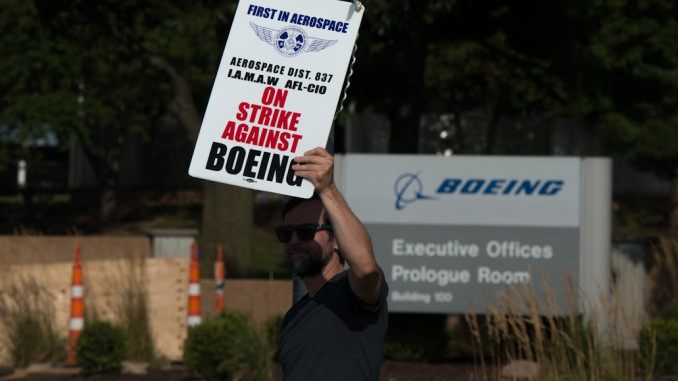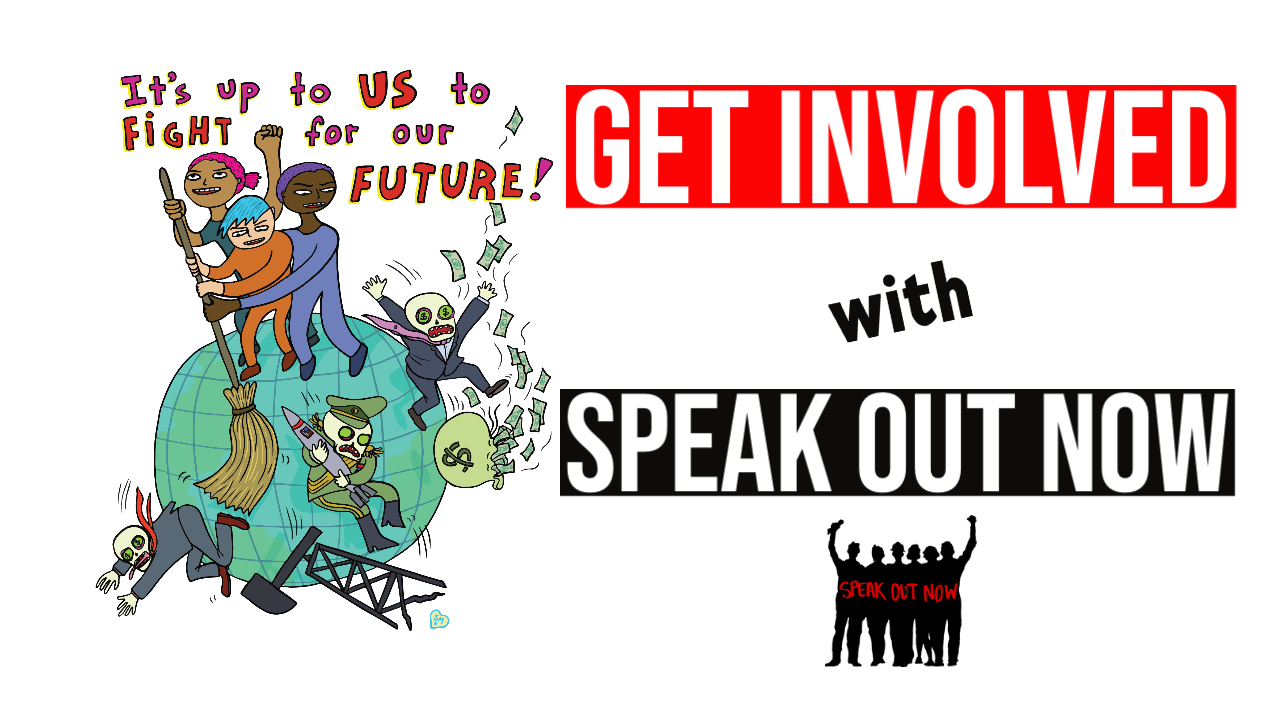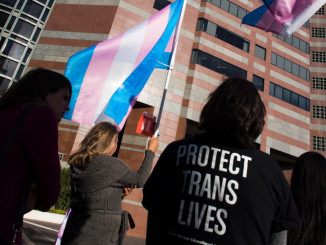
The strike by 3,200 members of the International Association of Machinists (IAM) began August 4 and, after six weeks, the workers are standing firm. On September 5, Boeing announced it would start hiring permanent replacement scabs. The union leadership has done nothing to counter this escalation. This decision by a major U.S. employer is a threat to workers everywhere, especially in the context of Trump’s aggressive and, so far, successful attacks on federal government workers’ rights, including his cancellation of union contracts covering hundreds of thousands of federal workers. Attacks on private and public sector workers are both part of the billionaires’ agenda for 2025.
The strike began after the membership twice rejected tentative agreements negotiated by the IAM. After the workers rejected the first tentative agreement, the company announced that, in the event of a strike, health benefits would immediately be cancelled. Workers will have to put up hundreds of dollars or more each month to continue their previous benefits. Even getting coverage from Obamacare requires paying an insurance company premium. The union is only providing $200 to $250 a week in strike pay. The low level of strike pay plus the fact that the workers had to vote down two proposed contracts is a sign that the IAM leaders never wanted this strike.
The workers’ refusal to accept the company’s so-called “best and final offer” clearly reflects their desire to win a settlement as good as the one that Boeing workers in Seattle achieved after an 8-week strike. The comparison is stark.
|
Category |
Seattle 2024 (IAM 751 – Commercial) |
St. Louis 2025 (IAM 837 – Defense) |
| Wages | ~38% over 4 yrs (+ performance pay) | 20% over 4 yrs; Boeing claims “up to 60%” progression |
| Bonus | $12,000 | $5,000 (withdrawn after rejection) |
| Performance Pay | Restored | Not restored |
| Retirement | Enhanced 401(k) & pension | Small 401(k)/pension tweaks |
However, the power position of the Boeing workers in Saint Louis is in some ways worse than that of their brothers and sisters in Seattle a year ago. And they had to fight hard to make those gains without much help from union leaders, who twice proposed unacceptable contract offers. In 2024, Boeing’s management was under huge pressure because quality problems resulting from speed-up caused crashes killing hundreds of people. Boeing had smaller cash reserves at the beginning of that strike than it does today. The total shutdown meant Boeing’s revenues stopped and it ran the risk of having to pay penalties if planes weren’t delivered to the airlines on time.
Today, not only does Boeing have much larger cash reserves, but it has already been paid up-front for military work by the government. Management personnel in Saint Louis are able to keep producing planes and perform maintenance, although at an admittedly slow pace. Boeing’s threat to hire replacement workers may prove in practice an empty bluff, at least in the short term. Even skilled scabs would have to be retrained and, in some cases, require getting security clearance to work on the most modern Air Force weapons, which can take a while.
Union officials encourage strikers to chant “one day longer, one day stronger.” That idea is usually an illusion and in this case it certainly is. Boeing is a major Department of War contractor. If the strike continues another six or eight weeks, the government working with Boeing officials could easily get a Taft Hartley injunction on the pretext that the strike has slowed maintenance and production of Air Force jets. The workers could then find themselves facing a vote to accept the more or less same offer they rejected in the first place, and they might find it very hard to summon up the determination to resume the strike. But management’s advantages can be countered if Boeing workers step up their tactics.
Boeing workers should rally support from other workers in the area who understand what’s at stake for all workers when bosses threaten to hire scabs. Boeing has announced it is holding a Scab Job Fair on September 16. If Boeing strikers decide to organize big picket lines to shut down the Boeing Scab Fair and ask other workers to join them, it would be a good beginning. Appeals for contributions to their strike fund from Boeing workers in Seatle is another idea, and perhaps more important would be a decision of IAM workers in Seattle to shut down production in the event that Boeing’s bosses transfer Seattle-based skilled supervisors or other management personnel to St. Louis.
Stepping up the tactics will require the workers take direction of the strike out of the hands of the top IAM officials who didn’t want a strike in the first place. Forming a big strike committee of active union members to mobilize the membership to actively picket, to organize delegations of strikers to address other union workers, and to make contact with IAM union activists in Seattle are tasks that can’t be left to half-hearted officials.
Boeing’s efforts to impose a sub-standard contract on workers at its military plants is an aspect of the “Billionaires’ Agenda” for 2025, and if it’s successful we can be sure the attacks next year will be worse. If the Boeing workers win their strike, it will indicate that resistance to the Billionaires’ Agenda can be successful. We all have a big stake in the outcome of this fight.




